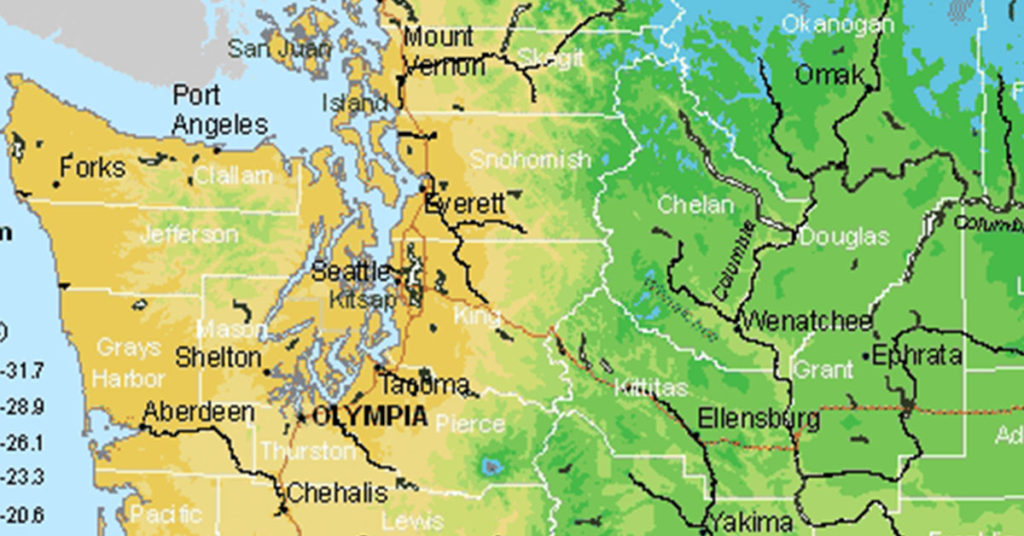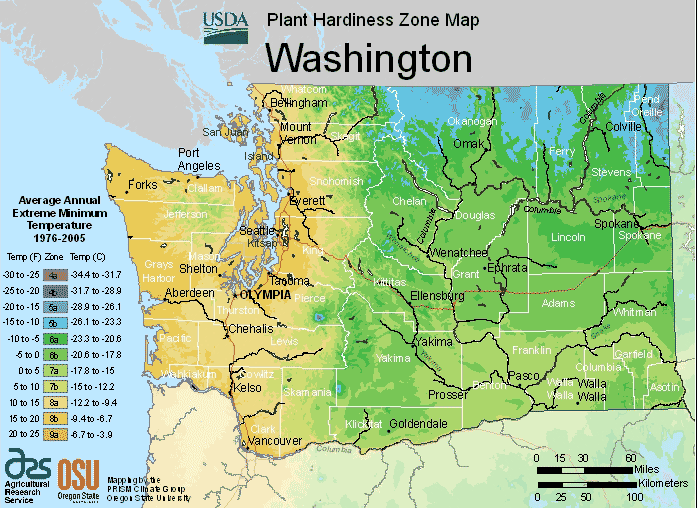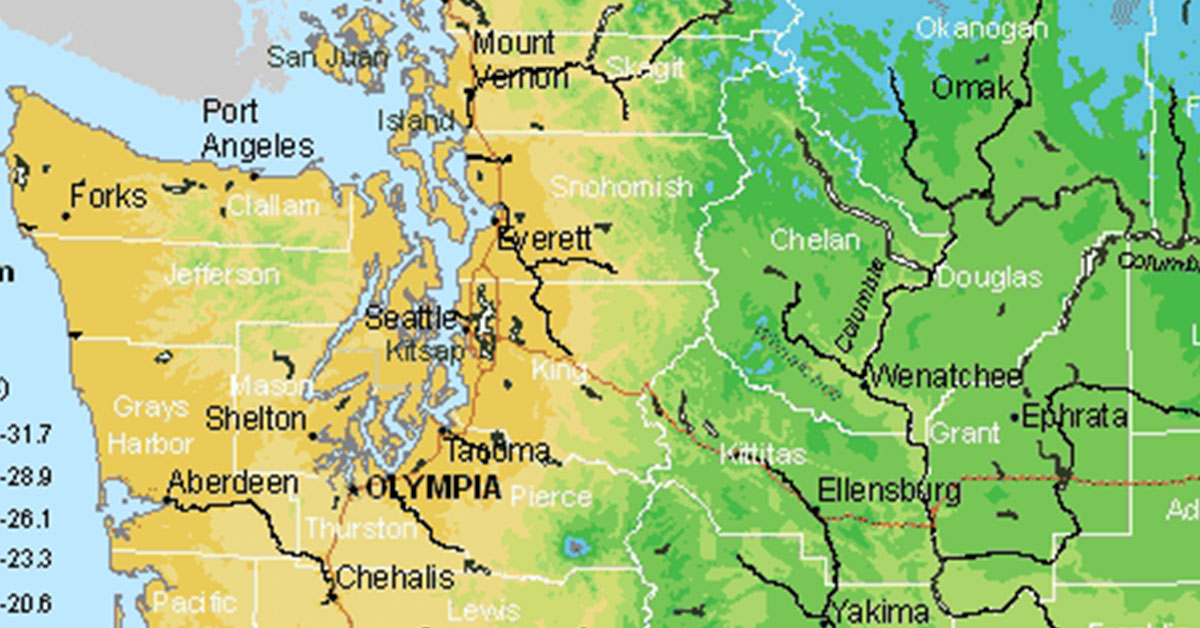If you want to be a successful gardener, there’s one thing you absolutely must know: your hardiness zone. Having a successful garden in Seattle means knowing when the first and last frost is likely to take place and how cold it gets in the winter.
The modern hardiness zone, sometimes called a growing zone, was developed by the USDA. They assign each hardiness zone by observing 30 years of annual minimum temperature data at each location in order to determine the likely lowest temperature each winter. Knowing how cold it gets and when the last and first frost dates are for the year can mean the difference between a successful garden and a lot of wasted time and money.
Seattle’s USDA hardiness zone

Seattle’s USDA hardiness zone is 8b. That means winter temperatures can drop as low as 15 degrees Fahrenheit. Freezing temperatures tend to begin in November and extend all the way until March the following year.
Washington’s USDA hardiness zone map

Washington’s USDA hardiness zones range from 4a, where temperatures can drop to as low as -30 degrees Fahrenheit, to 9a, where they only hit about 20 degrees Fahrenheit in the winter.
First and last frost date in Seattle
According to your hardiness zone, 8b, the final frost date in spring is likely to be around March 21st. Keep in mind that this is an estimation based on the observation of 30 years of data. It is not a guarantee. It is possible for frost to occur after this date so be prepared to cover your plants in the off chance you get an unexpected frost after this date.
Your first frost in the fall is likely going to take place around November 14th. Just as with your final spring frost, your first fall frost can come a little bit earlier or a little bit later. This date is not an exact guarantee.
When to plant in Seattle
Your last frost date is around March 21st. When planting from seed, read the instructions carefully and count backward from your outdoor transplanting date. Some seeds will require being sown directly outdoors after the final frost has passed – these seeds likely don’t handle being transplanted very well.













